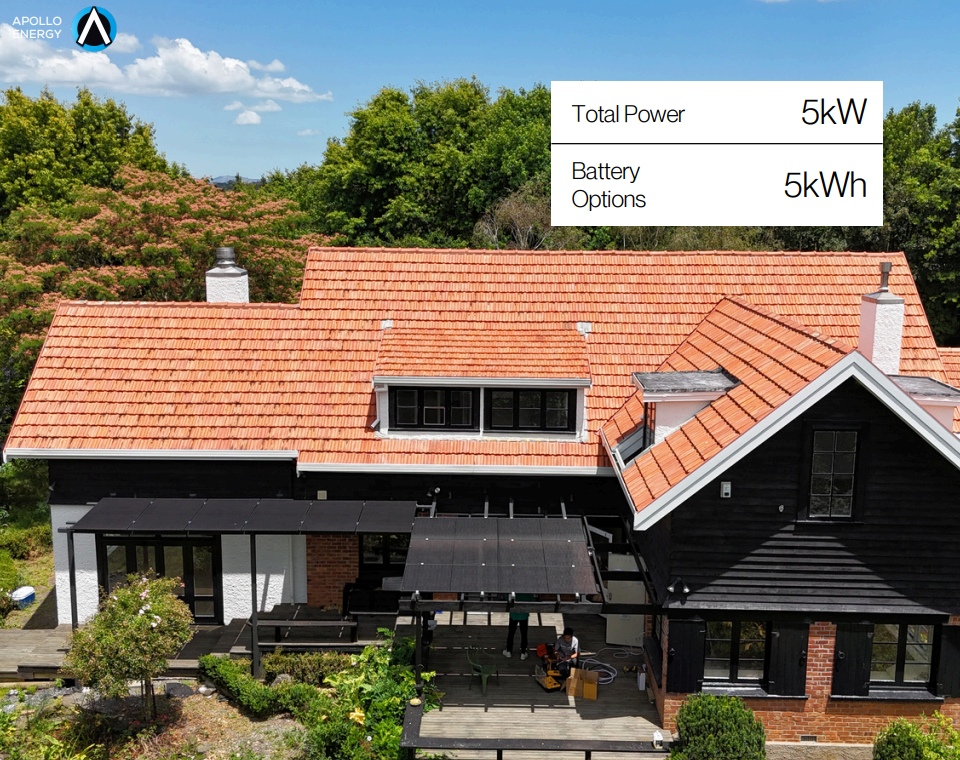From 100 kW to 20 MW: A Guide to Commercial Solar Systems for Rooftops and Solar Farms
- HornTech NZ
- Oct 1
- 4 min read
For businesses today, electricity costs are not just a line item—they’re a risk factor. In markets like New Zealand, grid prices continue to climb year over year. At the same time, companies face increasing pressure to meet ESG (Environmental, Social, and Governance) targets and to demonstrate measurable reductions in carbon emissions. This is where commercial solar systems come in. By installing a solar power system on a commercial rooftop or developing a dedicated solar farm, businesses can cut long-term operating costs, secure energy independence, and strengthen their sustainability credentials.

Understanding System Sizes: From Rooftops to Solar Farms
The right system size depends on your roof space, energy demand profile, and future growth plans. Below is a practical breakdown:
100 kW Systems – Entry-Level for SMEs
Best fit: Small to medium-sized warehouses, retail centers, or light manufacturing facilities.
Annual generation: Around 130,000–150,000 kWh depending on location and design.
Impact: Offsets a significant portion of daily load, reducing reliance on the grid while keeping upfront costs manageable.
Apollo Energy Project: East Tamaki, Auckland – 130 kW Rooftop Solar
In East Tamaki, one of Auckland’s busiest industrial hubs, a manufacturing company partnered with Apollo Energy to install a 130 kW commercial solar power system on its rooftop. The site was chosen because of its large, flat roof space and consistently high daytime energy demand — conditions that make rooftop solar highly effective.
System Size & Design
The project uses Trina Solar panels coupled with Sungrow commercial inverters, optimized to maximize energy yield under New Zealand’s coastal conditions. Structural assessments and shading analysis were carried out to ensure both safety and performance.
Performance
The system is expected to generate around 178,000 kWh of electricity annually, a figure that actually exceeds the typical benchmark of 130,000–150,000 kWh for a 100 kW-class system. This higher yield reflects careful design, optimal roof orientation, and high-efficiency equipment.
Financial Impact
By consuming most of the generated solar energy on-site, the business now saves approximately NZD 32,000 per year in electricity costs. With New Zealand’s electricity prices trending upward, these savings are expected to grow even further over the system’s 25+ year lifespan.
Strategic Benefits
Beyond cost savings, the installation helps the company:
Reduce grid dependence, lowering exposure to volatile energy prices.
Advance ESG commitments, demonstrating measurable carbon reduction in sustainability reporting.
Future-proof energy needs, as the system was designed with flexibility for battery storage or EV charging upgrades.
Broader Significance
This East Tamaki project highlights how small- to mid-sized commercial facilities can unlock big benefits from solar. Even at the 100 kW scale, the impact is substantial—both financially and environmentally—making it an attractive entry point for SMEs considering solar investment.
300 kW Systems – Mid-Size Commercial Rooftops
Best fit: Larger warehouses, distribution centers, cold storage facilities, or corporate headquarters.
Annual generation: Approximately 400,000–450,000 kWh.
Impact: Provides deeper savings, stabilizes long-term energy costs, and is often sized to match daytime industrial demand.
Added benefit: Often qualifies for stronger financing packages, rebates, or tax incentives, depending on jurisdiction.
500 kW Systems – Large Commercial Facilities
Best fit: High-consumption sites such as data centers, heavy manufacturing plants, or multi-building complexes.
Annual generation: 650,000–750,000 kWh.
Impact: Major contribution to corporate ESG reporting; can reduce annual grid consumption by 30–50% for energy-intensive businesses.
Consideration: At this scale, roof structural assessments, shading analysis, and grid integration studies become more critical.
1–20 MW Systems – Utility-Scale Solar Farms
Best fit: Businesses with extensive landholdings, energy-hungry operations (like logistics hubs, food processing plants, or mining), or investors entering renewable energy markets.
Annual generation: 1 MW systems can exceed 1.3 million kWh annually, while a 20 MW solar farm can power thousands of homes or fully offset the electricity demand of large industrial parks.
Impact: These projects often sell excess energy back to the grid under Power Purchase Agreements (PPAs), creating not only savings but also new revenue streams.
Key Components of a Commercial Solar Power System
Solar Panels: Tier-one modules such as Trina Solar, built with half-cut cell technology for efficiency and durability.
Inverters: Brands like Sungrow or Growatt deliver high conversion efficiency, real-time monitoring, and NZ grid compliance.
Mounting Systems: Heavy-duty racking designed to withstand local wind, weather, and roof conditions, whether on rooftops, ground mounts, or carports.
Monitoring & Control: Cloud-based systems to track performance, optimize output, and ensure ROI projections are met.
Financial Returns and Incentives
Well-designed commercial solar systems typically achieve payback within 5–10 years, depending on system size, location, and grid tariffs. In New Zealand, businesses may qualify for:
New Zealand Banks commercial loan
Solar rebates and subsidies
Accelerated asset depreciation
Energy buy-back schemes for exported electricity
By coupling direct energy savings with financial incentives, solar becomes not only an environmental decision but also a strong financial strategy.
The Bigger Picture: ESG and Future Readiness
For forward-looking companies, a commercial solar system is more than an energy project—it’s a long-term resilience strategy. Solar generation protects against volatile electricity markets, enhances a company’s ESG profile, and creates flexibility for future upgrades such as battery storage or EV charging stations. From 100 kW rooftops to 20 MW solar farms, the opportunity is clear: clean energy is now a competitive advantage.




Comments